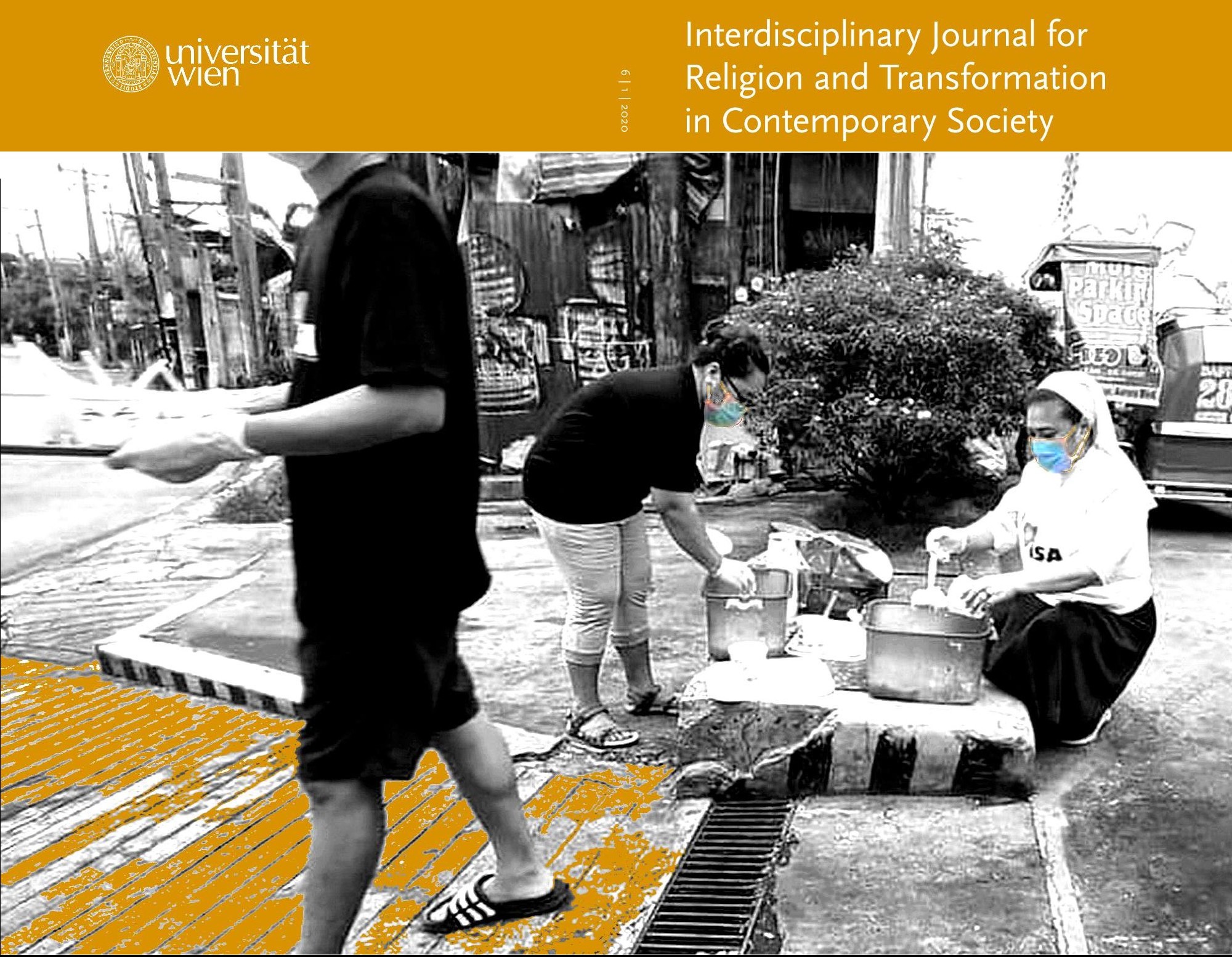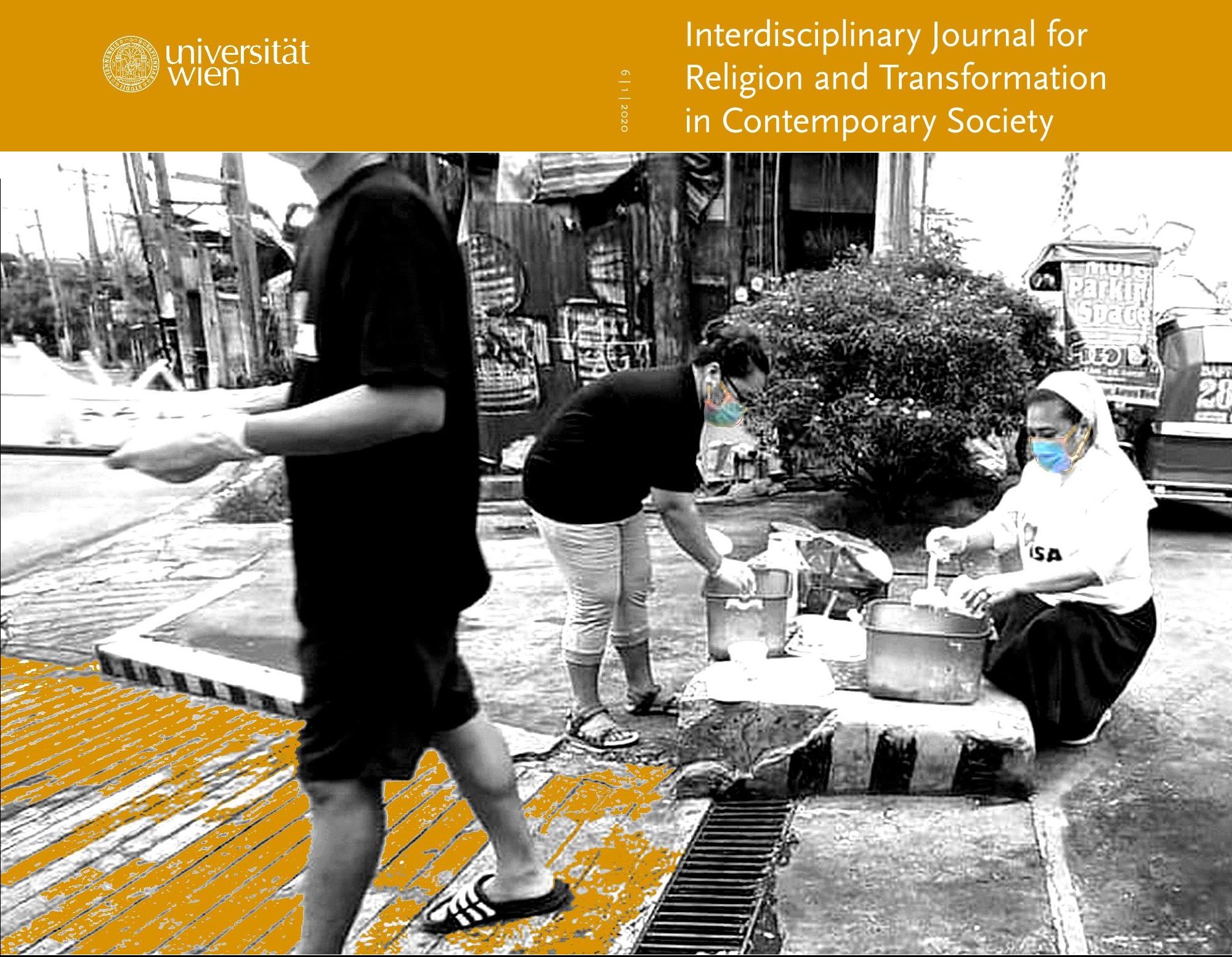

We can make some exciting and probably unexpected discoveries when theological ethicists explore human dignity. Guest Editors Katharina Mairinger and Nenad Polgar give an insight into the new JRAT issue Exploring Human Dignity: Foundations and Applications that Transform Contemporary Society.
By recognising the importance of affirming and promoting human dignity and human rights in the second half of the twentieth century, the Catholic Church used the opportunity to take a stand on what has become a public discourse on these matters. Nevertheless, the public discourse on human dignity and human rights admits of various, sometimes opposing, interpretations. These necessitate careful discernment: What is within it compatible with the Catholic tradition, but also where does the public discourse on human dignity and human rights legitimately challenge the Catholic tradition? The latter indicates that the concept of human dignity has a potential to raise issues that have not yet been theologically sufficiently treated. Apart from this, the implementation of a hermeneutics based on the notion of human dignity in practice seems to be one of the most difficult tasks nowadays. This is further complicated due to the claim of the universality of human rights. On the one hand, theological ethical research has to take different cultures and religions into account. On the other hand, recognition should be promoted beyond every difference.
Apart from that, the various interpretations of the term human dignity make it difficult to define it appropriately. It seems to be easier to consider where human dignity has been violated rather than knowing what it implies in concrete situations. Many people would agree that the Corona pandemic has surely made us more aware of what is indispensable for human dignity. First, there is solidarity: We have learned to take care of each other and minimise the risk of infecting people with the virus. At the same time, however, the uncertainties have become greater and greater: “How far does our individual responsibility not to infect other people extend? Who is responsible for ensuring that people in poor countries can keep physical distance from each other and still be able to earn enough in order to survive and provide for their families?” Second, physical closeness and attention make human dignity tangible on the practical level. This insight also emerged from our current experience, because we have asked ourselves “How can one express one’s appreciation of the dignity of another person by always having in mind to keep distance?” Third, the numerous regulations, the obligation to wear masks, and the lockdowns have strengthened our will for autonomy as a precondition of human dignity.
Even if these are only a few key words, they provide a solid basis for understanding human dignity: Being protected and able to live according to autonomous standards in exchange, contact, and solidarity with others. At the same time, the Corona pandemic made it vividly clear that human dignity should not be taken for granted – it always pushes us to think anew what it entails and how it should be protected, while leaving open the possibility that it might ask very different (sometimes even opposite) things from us as the circumstances change drastically.
This approach is far from a perspective that commonly considers human dignity from only transcendental or objective point of view. The anthology “Exploring Human Dignity: Foundations and Applications that Transform Contemporary Society” – volume 6 (1/2020) of the series Interdisciplinary Journal for Religion and Transformation in Contemporary Society – seeks to address still existing desiderata in the context of the theoretical and practical recognition of human dignity and human rights within already existing foundational theological frameworks. Insofar as this volume starts with the theoretical foundations of human dignity, it demonstrates that there are many possible points of departure in discussing human dignity within Catholic theology. Still, there remain topics, that request considerations as well. Therefore, the second part of the volume considers practical applications. Every approach conveys an understanding of human dignity in its own way and cannot be separated or neglected partly.
As Antonio Autiero points out: “No other concept has had so much resonance in the history of ethical thought than that of the dignity of the person.” (p. 10) In his view, the concept of human dignity displaces or at least interrupts ontological thinking in a way that opens up a possibility of critical engagement with contemporary challenges. This fact alone makes it clear that the discussion about the imago Dei, as the basis of the Christian understanding of human dignity, has undergone and is still in development, e.g. through the interrelation between demands of human dignity and those of hierarchical (Church) structures. Repeatedly, the Catholic tradition has been challenged when its theology strayed by incorporating essentialist reductions of the human being. In addition, there have been receptions that excluded the universal aspect of the imago Dei paradigm, which “can endanger a full acceptance of human dignity and human rights” (p. 22) and necessitate engagement in intercultural dialogue, as Sigrid Müller shows in her historical approach. Several contributions in this anthology pick up this point and detect further such reductions that persist, although the Second Vatican Council made a shift towards a holistic personalistic understanding of human dignity based on conscience and free will.
According to James Keenan (pp. 56-73), it is therefore necessary to understand human dignity in relation to concepts of vulnerability and virtue ethics, in order to root the recognition of one’s own personality in practically acquired virtues such as humility, vigilance, mercy, and hospitality. While such an approach provides an excellent starting point for a contemporary dynamic understanding of human dignity that needs to be attentive to particularity, Maureen Junker-Kenny (pp. 74-89) warns us that it should not be equated with an empirically verifiable understanding of human dignity. Linking the latter with the theory of social contract, the author points out its insufficiency insofar as it can, at best, offer legal prohibition of instrumentalising others. In order to incorporate a thicker account of human well-being, such a theory would do well to take heed of the transcendental Christian understanding of human dignity, but without reducing theological anthropology to ecclesiology. According to Peter Kirchschläger’s contribution (pp. 90-106), the issue of striking a balance between particularity and universality plays a major role in the human rights discourse. This discourse can only assert its universality with difficulty if the transcendental foundation of its universality is not clear and its relation to particularity, i.e., to different worldviews, cultures, and religions, remains unaddressed. Richard Amesbury (pp. 107-117), on the other hand, expresses his reservation towards the idea that the project of human rights offers something altogether different from other religious and cultural projects. Rather, he sees in them a realization of a universalist idea on a particular level. He argues that a more promising way of defending human person and his/her rights might lie in Simone Weil’s provocative idea of the impersonal.
A crucial aspect of contemporary development of the notions of human dignity and human rights, addressed in the second part of the anthology, is their application on concrete issues, either within or without the Catholic Church. Tina Beattie (pp. 140-157), for example, explores whether the refusal of the priesthood for women represents a break with the imago Dei conception, insofar as it underlies the notion of human dignity. She is not, of course, applying the notion of human dignity directly on the issue of women’s ordination in the Catholic Church, but is instead drawing attention to the analogous concept of baptismal dignity that might be violated through that prohibition. Similarly, Todd Salzman and Michael Lawler (pp. 119–139) show that magisterial teaching has not bridged the gap between the theoretical affirmation of human dignity and the practical realisation thereof, due to lacking a sexual anthropology that can account for persons of both heterosexual and homosexual orientation. This gap does not only concern marriage and sexuality. In her article, Kristin Heyer proposes to bridge the “gap between the normativity of the dignity of the migrant and the practical denial of their rights” (p. 159) by taking into account structural relationships in the context of social sin. It seems that the concept of structural sin is also missing in secular approaches to environmental ethics. Richard Miller (pp. 171–192) takes a closer look at the neglected consideration of the dependencies of human rights and climate change. When healthy climate is considered a basic human right, Laudato Si’ can offer guidelines on how to connect both within an environmental ethics.
To conclude, the debate over human dignity and human rights is situated between particularity and universality and demands critical reflection as long as people continue to strive to live, respect, and protect a dignified life. These theological ethicists offer critical contributions to an ongoing reflection on human dignity in the hope of continuing the dialogue with the Church, society, and other political institutions engaged in promoting human dignity.
Inspired by the workshop and the contributions of the publication, Katharina Mairinger started the donation project “Mit Reis Leben retten” (Save lives with rice) for the Philippines in May 2020. Many poor people there have been starving since the Corona pandemic broke out. Human dignity proves to be particularly threatened where the basic supply can no longer be guaranteed. The donations are used to put together food packages and distribute them to the population. For more information see: https://www.facebook.com/mitreislebenretten
Thank you for your donations!
| Account name | Verein MUZU |
| Account number | IBAN: AT11 3445 5000 0403 3965 BIC: RZOOAT2L455 |
| Reference for payment | „Mit Reis Leben retten“ + date of birth |
In Austria your donations are tax deductible.
Bibliography:
Amesbury, Richard, Beyond “Christian Human Rights”. Simone Weil on Dignity and the Impersonal, in: JRaT 6/1 (2020) 107–117.
Autiero, Antonio, Human Dignity in an Ethical Sense. Basic Considerations, in: JRaT 6/1 (2020) 9–21.
Beattie, Tina, Human Dignity and Rights in the Context of Gender and the Sacramental Priesthood, in: JRaT 6/1 (2020) 140–157.
Heyer, Kristin E., Migrants Feared and Forsaken. A Catholic Ethic of Social Responsibility, in: JRaT 6/1 (2020) 158–170.
Junker-Kenny, Maureen, Human Dignity or Social Contract as Normative Frameworks in Applied Ethics?, in: JRaT 6/1 (2020) 74–89.
Keenan, James F. S., Linking Human Dignity, Vulnerability and Virtue Ethics, in: JRaT 6/1 (2020) 56–73.
Kirchschläger, Peter, Human Dignity and Human Rights. Fostering and Protecting Pluralism and Particularity, in: JRaT 6/1 (2020) 90–106.
Miller, Richard W., Climate Change, Catholic Social Teaching, and Human Rights, in: JRaT 6/1 (2020) 171–192.
Miller-McLemore, Bonnie J., Embodied Knowing, Embodied Theology: What Happened to the Body?, in: Pastoral Psychol 62/5 (2013) 743–758.
Müller, Sigrid, Concepts and Dimensions of Human Dignity in the Christian Tradition, in: JRaT 6/1 (2020) 22–55.
Salzman, Todd A. – Lawler, Michael G., Human Dignity and Homosexuality in Catholic Teaching. An Anthropological Disconnect between Truth and Love?, in: JRaT 6/1 (2020) 119–139.
Rat-Blog Nr. 14/2020
One thought on “Exploring Human Dignity Together”
Comments are closed.